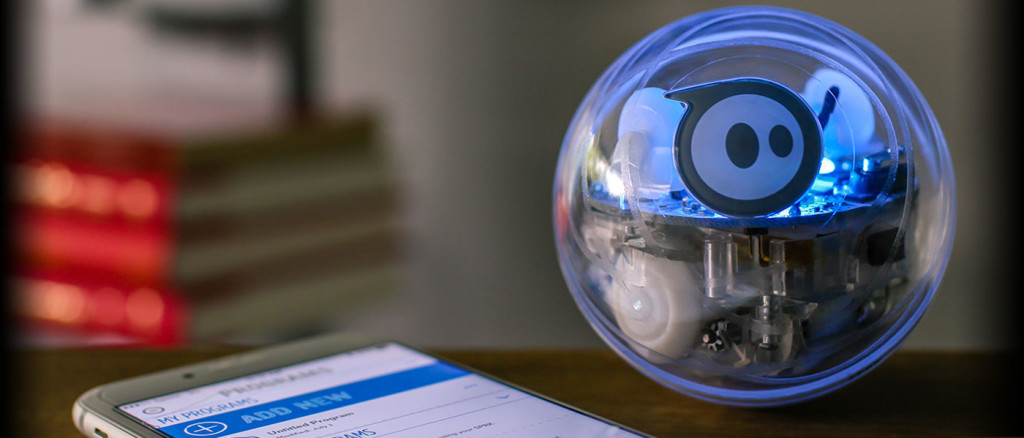
GLENDALE, Calif. – If it weren’t for someone willing to entertain a new idea, the new “Star Wars” droid, BB-8, wouldn’t be rolling into living rooms this holiday season.
The robot – which looks like a mechanical head on a spinning ball – was the brainchild of filmmakers behind “Star Wars: Episode VII – The Force Awakens,” who were unaware their puppetry-animated character could function in real life.
But in July 2014, the CEO of Lucasfilm-parent Disney, Bob Iger, showed secret images of BB-8 to a startup company called Sphero. It was one of the inaugural class of companies Disney brought into a three-month program meant to nurture their entrepreneurial spirit and maybe generate a money-making product.
It was like Force lightning hitting pay dirt.
Sphero’s founders dummied up a functioning prototype that very night, an innovation that now sits in a special locked room in its headquarters in Boulder, Colorado.
“Imagine sitting down with Bob Iger and him pointing to something the whole world wants to know about,” said Sphero CEO Paul Berberian. “And you get to see something that you’ve been working on. What a magical stroke of luck.”
Disney’s “accelerator” is the kind of program being adopted by big companies like Microsoft, Barclays, Nike and Volkswagen. The idea is to invest a small amount in a handful of startups, set them up in cheap office space, mentor them, and launch them on a trajectory for more funding, product development, and possibly business deals.
Disney now plans to give the BB-8 toy made by Sphero a big push in September online and in Disney Stores before the movie opens in December. It also took a minority stake in Sphero, which has raised $81 million so far.
Kevin Mayer, Disney’s chief strategy officer, says the accelerator program is less about earning a quick profit and more about dreaming up innovative products and injecting Disney’s upper management with energy and ideas.
“There’s a different form of excitement that you get when you have new people whose company is on the line and it’s a make-or-break moment for them,” Mayer said. “All the executives who came in and mentored – to a person – enjoyed it tremendously and came out feeling more energized than they went in.”
The secret to success? Corporations must “give first” – in other words, be free with their time, advice and contacts without an expected return, says David Cohen, the CEO of Techstars, which administers 18 different accelerators, half of which are linked to major corporations.
Seeking an immediate benefit through an exclusive distributor relationship or a guarantee of a future equity stake at a predetermined price can limit good ideas and turn away potential applicants on the cusp of trying to broaden their market reach.
“That’s what corporate America is still learning,” Cohen said. “Once (corporations) are helpful, in turn, (the startups) are probably happy to have them invest more or buy the company.”
Already funded with roughly $30 million before joining Disney’s accelerator, Sphero didn’t need the $120,000 investment that all participants are awarded. Instead, it was looking to tap into Disney’s storytelling expertise to humanize its toy and gain access to Disney’s senior management team.
The relationship helped open the door to Sphero becoming the licensed maker of the BB-8 toy, get distribution agreements with major retailers and polish its in-store presence. “I can’t express how much they’ve essentially backed up the truck to help us,” Berberian said. “It’s humbling.”
Accelerators are becoming an increasing source of innovation for major companies. Accelerator operators like Techstars and Plug and Play Tech Center pair large companies like Home Depot, Johnson and Johnson, Citibank and Coca-Cola with startups that could benefit from their connections and experience. Meanwhile, large companies are scouring the landscape for ideas that can help them stay ahead.
Microsoft has run 410 companies through its accelerator program since 2012, and even acquired one in 2013 – MetricsHub – which helps IT managers keep an eye on their cloud computing resources and save money through automation. The product is now given to customers of the Windows Azure cloud computing service for free.
But not all accelerators work. Media Camp, an accelerator run by Time Warner Inc.’s Turner and Warner Bros. units, was shut down last year after three years.
Hal Gregersen, executive director of the MIT Leadership Center, says embracing new ideas can be difficult for large organizations, especially those focused on results, execution and improving profits from existing business lines.
“New ideas will never be nurtured for success by results-driven executives who either don’t know how to innovate themselves, or truly don’t honor others who do,” he said. “Because most of these ideas are long leaps of faith.”
This year’s class of 10 startups has already taken up residence at the Disney space in Glendale, across the street from its interactive and consumer products division. On a recent visit, the startups’ CEOs introduced themselves and their projects as Mayer walked around the room asking questions.
MakieLab, the maker of custom-made dolls made using 3-D printers, was looking to explore pairing its technology with Disney characters, like its Princess line. Mayer thought out loud about teaming up MakieLab with a graduate of last year’s class, Tyffon, which adapted its zombifying photo app for Disney characters from “Frozen” to “Star Wars.”
“If you could mesh that with a 3-D printer and have the whole thing come out in a 3-D doll, now we’re talking,” Mayer said.
Tan Le, CEO of Emotiv, said she hoped her brainwave-reading headset might follow in Sphero’s footsteps. Software developers have proven they can use the headset to direct self-driving cars. Other applications include helping disabled people drive wheelchairs.
Le was well aware her device imparts upon its wearer powers eerily reminiscent of the Force from “Star Wars.”
“The opportunity to embed a product into the ‘Star Wars’ franchise is enormous,” she said. “We think our relationship with Disney can be a real game changer for us as well.”